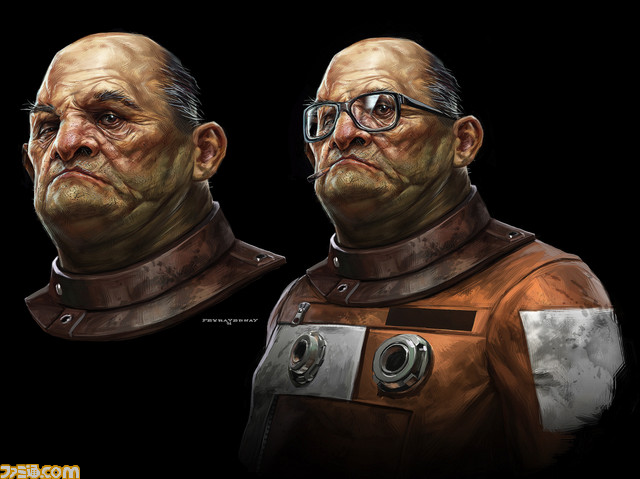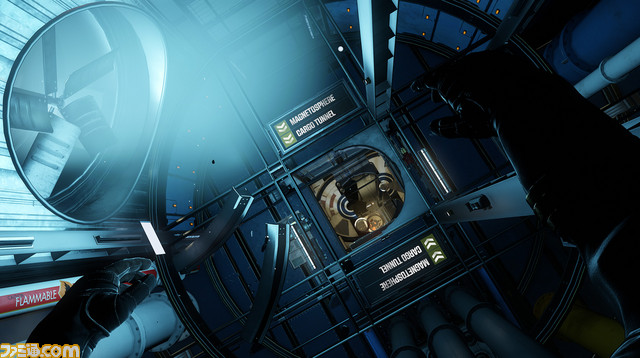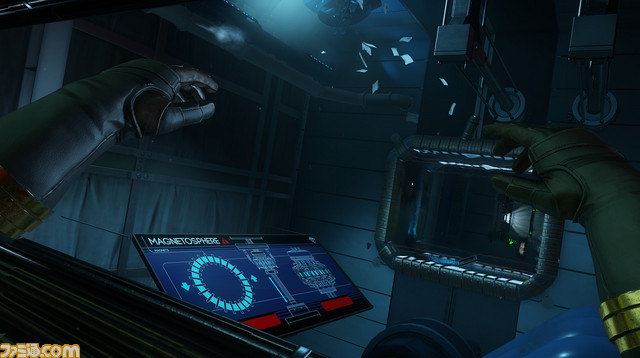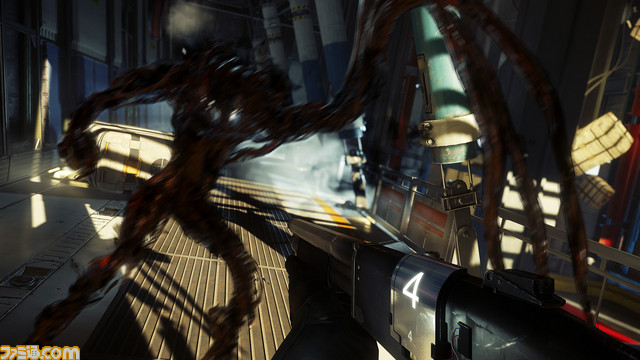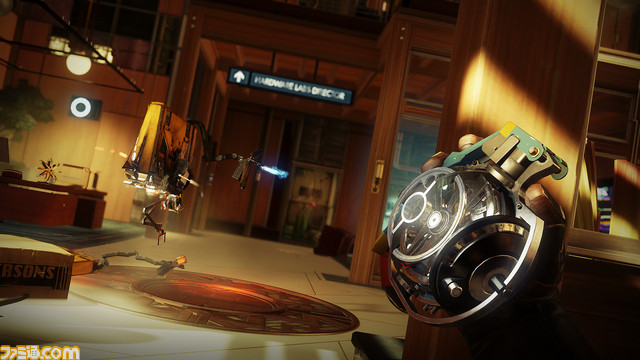Building Prey’s Interconnected World
Setting matters. With few exceptions, the most memorable contemporary games are set in interesting locations with their own sense of history. Would BioShock have worked if Rapture hadn’t been so exquisitely crafted? The Elders Scrolls games have each built rich and lore-filled worlds that flesh out the day-to-day lives of its inhabitants. And even if we wouldn’t want to live there, Grand Theft Auto V’s Los Santos presents a vision of a west-coast city/nightmare that’s oftentimes uncomfortably close to reality. Arkane Studios’ upcoming sci-fi game
Prey features a meticulously designed and researched space station, Talos I, which provides a plausible backdrop for a bizarre new threat.
Prey is set in an alternate history, in which the Russian and United States governments put their differences aside following an encounter with an alien foe. You can watch
this video to get a better sense of where our timelines split (big change: the aliens). The station evolved over several decades, depending on its purpose at the time. Initially, it was merely a prison to contain these new aliens,
the Typhon. From there, the U.S. government took over fully, building a research station around the core. Nothing came of those early efforts, aside from another deadly incident between scientists and the Typhon. At that point, the government decided to cut its losses, and shuttered the project.
Years later, a corporation called TranStar was founded. It took over the station, which was idly orbiting the moon. Thanks to advances in neuroscience, the company was able to finally harness the Typhon, taking advantage of the aliens’ unique body and brain composition. (For a more in-depth look at these creatures,
take a look at our feature). Eventually, TranStar developed a product called Neuromods, which restructure a person’s brain to enable them to do things that they couldn’t before – such as learning to play a musical instrument or speak a foreign language, or even have greater strength or endurance.
These Neuromods are a big business back on Earth, and the corporation has reaped in the rewards. Our adventure in Prey is centered around Talos I, but thanks to the work of Arkane’s art and design teams, players can pick up a variety of clues about TranStar’s place in the greater world, as well as what life was like on the station before yet another catastrophe struck.
You invariably have to suspend some amount of disbelief when you’re playing a game with aliens in it. Still, Prey’s designers felt that it was important for players to feel as though they were exploring a place that felt real and adhered to its own internal logic. That meant that Arkane put a lot of effort into designing Talos I with an eye toward believability and functionality – even as players battled aliens that could shapeshift into garbage cans.
“[We] spend a lot of time thinking about, ‘Hey guys it doesn’t make any sense that someone has to walk this far to do this,’” says lead designer Ricardo Bare. "'There would be an elevator here or a staircase here. It sounds dumb, but this place doesn’t have a bathroom. Where do these people pee? They have to hold it for 12 hours and then ride an elevator back down to the bottom of the space station?'" Bare says that Arkane did its homework in making sure that the place felt like a fully staffed location, and that the people didn’t just teleport away once their shift was over. “We know where everybody’s sleeping quarters are, where they eat, where they work.”

Players can see some of that attention to detail themselves, by interacting with security terminals throughout the station. Employees wear tracking devices during their deployment on Talos I, and some of those are still active. If you follow these electronic pings, you might be able to find a survivor or the remains of an unfortunate victim – as well as information that could lead to valuable items.
There are other clues to pick up on as well. Bare says that players can explore the offices of TranStar’s sales and marketing teams, and optionally learn more about how the Neuromods are brought back to Earth. Knowing the security protocols for transporting these valuable items isn’t a huge detail, but Arkane says it’s important that they know how all of it works. (Incidentally, shuttles come every week, and the Neuromods are put in attache cases that are handcuffed to an envoy.)
Having that kind of fictional shuttle schedule lets the team work out other things, too. The Talos I staff grows some of its own food and recycles as much oxygen and water is possible (in treatment areas you can explore), but it’s not a completely closed loop. Other shuttles arrive with supplemental food and additional resources to keep the staff content. TranStar employees are on rotations between 18-24 months, so the company works to ensure that the accommodations are as luxurious as possible. That means creating relaxing spaces such as a plant-filled arboretum, or outfitting the living areas with high-end materials. Those lifelines have been severed by the time you enter the picture, but you can discover records and communications that further outline how things ran before.
TranStar depended on keeping its employees safe, and also keeping the Typhon alive. Without the aliens, after all, it would be out of business. That delicate balance – and a general tendency toward a more grounded reality – affects the weapons that players will be able to use during the game.
“You’re not going to find a dead soldier and find a bazooka,” Bare says. “Instead, there are security officers that have handguns or maybe tasers, and in case of emergencies maybe there’s a security closet with a shotgun. All of those are made by the fabricators on the space station, so they’re not the best constructed things.” These weapons have a disposable quality to them, which is a nice in-universe way to have them break down for gameplay-balance purposes.
The security teams took a nonlethal approach whenever possible, leading to the use of things such as riot foam and tasers. The foam in particular has other interesting uses, such as sealing up leaking pipes or as a quick handhold for reaching a higher point. You can see how that works in action during
this gameplay demo, and also get a look at Talos I in general. The station itself is approximately the size of The Empire State Building, so this is only a small section of it.











![The Year of Incline [2014] Codex 2014](/forums/smiles/campaign_tags/campaign_incline2014.png)

